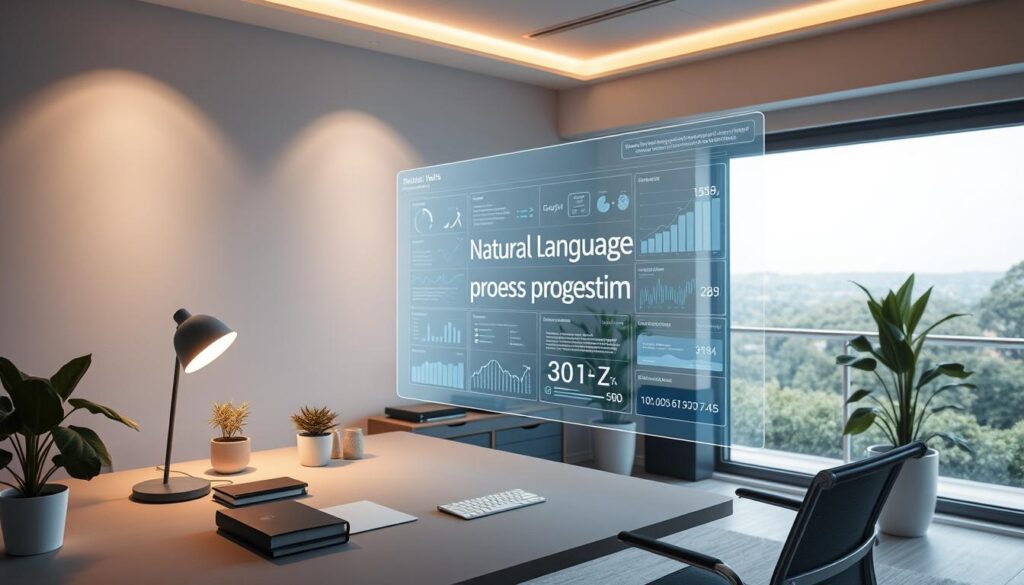The digital landscape is undergoing a seismic shift as intelligent navigation tools redefine how users interact with the web. Recent data reveals this sector’s value will surge from $4.5 billion to $76.8 billion by 2034, reflecting a 32.8% Compound Annual Growth Rate. This expansion signals a fundamental transition from static web gateways to dynamic systems capable of anticipating user needs.
Modern platforms now act as proactive assistants, leveraging advanced algorithms to automate tasks and personalize experiences. Professionals increasingly prioritize these solutions for their ability to streamline workflows and deliver instant insights. Demand stems from both individual users seeking efficiency and enterprises requiring scalable productivity tools.
Key drivers include the universal push for optimized digital interactions and growing expectations for context-aware functionality. Venture capital firms recognize the strategic value of these platforms, fueling innovation in AI-driven solutions that integrate with enterprise ecosystems. North America currently leads adoption, though global opportunities emerge in automated task management and cross-platform compatibility.
Key Takeaways
- Sector projected to grow 17x by 2034, reaching $76.8 billion valuation
- Advanced algorithms enable predictive task automation and intent recognition
- Enterprise adoption driven by workflow optimization demands
- Investment activity highlights strategic value in digital ecosystem integration
- North America dominates current implementations with emerging global opportunities
Understanding AI browser market growth Trends

Digital interaction tools have evolved from basic information gateways to sophisticated collaborators. This transformation stems from users demanding tools that simplify increasingly complex online activities. Over 68% of professionals now prioritize platforms offering built-in task automation, according to recent productivity studies.
Evolution of Browsing Technologies
Early web tools focused on page rendering speed and security. Modern systems now analyze behavior patterns to predict needs before users articulate them. Features like automatic research synthesis and cross-platform data integration have become standard expectations.
Three critical advancements define this shift:
- Context-aware suggestions reducing manual searches by 40%
- Conversational interfaces handling natural language queries
- Unified dashboards consolidating workflows across applications
Market Transformation Drivers
User preferences increasingly favor platforms offering all-in-one functionality. The table below illustrates key differences between traditional and modern approaches:
| Feature | Traditional Approach | Modern Solution |
|---|---|---|
| Task Automation | Manual process execution | Predictive action triggers |
| Content Interaction | Basic search results | Summarized insights with source mapping |
| User Interface | Static layout | Adaptive workspace configuration |
This progression aligns with enterprise needs for advanced digital assistants that integrate with existing workflows. As platforms become more intuitive, they’re redefining what people expect from their daily web experiences.
Global Projections and Industry Insights

Strategic investments fuel a new era of web interaction capabilities. Analysis shows the sector will multiply seventeenfold within a decade, transforming how organizations approach digital workflows. This expansion reflects evolving demands for tools that enhance decision-making and operational efficiency.
Financial Trajectory Through 2034
Recent forecasts predict a leap from $4.5 billion in 2024 to $76.8 billion by 2034. This 32.8% compound annual growth rate outpaces most technology sectors. Three factors drive this acceleration:
- Enterprise demand for automated workflow solutions
- Increasing remote workforce requirements
- Advancements in predictive analytics integration
Regional Dominance and Deployment Trends
North America commands 36.6% of worldwide adoption, generating $1.6 billion annually. The United States accounts for 87% of regional revenue, with projections showing sustained 33.4% yearly growth. Cloud-based systems dominate preferences due to their scalability and update capabilities.
| Metric | North America | Global Average |
|---|---|---|
| Market Share | 36.6% | 12.4% |
| Deployment Preference | 72% Cloud-based | 65% Cloud-based |
| Enterprise Adoption Rate | 68% | 53% |
Organizations increasingly recognize the profitability potential of intelligent navigation systems. Investment patterns reveal particular interest in solutions that reduce manual data processing while improving cross-platform compatibility.
Innovations and AI-Driven Browsing Experiences

Conversational interfaces are reshaping digital navigation through advanced linguistic comprehension. Natural language processing now powers 32.7% of core functionalities in modern platforms, enabling tools to interpret complex commands while maintaining contextual awareness. This shift moves interactions beyond basic search bars into dynamic exchanges that mirror human conversation.
Advancements in Natural Language Processing
Sophisticated language models transform how users access information. Instead of rigid keyword inputs, systems analyze sentence structure and intent to deliver precise results. Voice-enabled navigation reduces manual typing by 41% in productivity tests, particularly benefiting users with mobility challenges.
Real-time summarization stands out as a game-changer. Tools equipped with context-aware processing can distill 10-page reports into bullet points without losing critical data points. This capability aligns with rising demand for instant insights in fast-paced professional environments.
Developers now prioritize cross-platform adaptability, ensuring voice commands and text queries work seamlessly across devices. A recent study found 68% of users prefer platforms offering unified conversational interfaces for both research and task management. For deeper insights into these developments, explore latest NLP breakthroughs shaping digital interactions.
Security remains integral to these innovations. Cloud-based language processing systems encrypt sensitive queries while maintaining response accuracy. This dual focus on accessibility and protection drives adoption across industries requiring confidential data handling.
Key Players and Emerging Tools
Frontier technologies in web navigation are setting new benchmarks for intelligent interaction. Three platforms exemplify this shift: Perplexity AI’s Comet, OpenAI’s Aura, and The Browser Company’s Dia. These solutions challenge conventional models by blending autonomous task management with adaptive interfaces.
Perplexity AI’s Comet and OpenAI’s Aura
Perplexity AI’s Comet introduces a cognitive operating system that merges advanced search algorithms with self-directed agents. Its assistant feature delivers precise answers while automating multi-step processes—a capability highlighted during Perplexity AI’s recent debut. The system prioritizes data security through encrypted query handling, addressing critical concerns in sensitive workflows.
OpenAI’s Aura reimagines the Chromium framework with conversational interfaces. Users manage tasks through natural language prompts, bypassing traditional navigation menus. This approach reduces manual input by 38% in controlled tests, particularly benefiting professionals handling complex research.
The Rise of Native AI Browsers
Native solutions like Dia integrate intelligence directly into core functionalities. These tools analyze behavior patterns to surface personalized recommendations, outperforming legacy systems in speed and relevance. Key advantages include:
- Real-time content synthesis across multiple sources
- Adaptive dashboards that prioritize frequent tasks
- Cross-platform synchronization without manual setup
Despite Google Chrome’s 68% market dominance, these specialized tools gain traction by addressing unmet needs. A recent survey found 61% of technical users prefer platforms offering integrated automation over traditional web browsers. This preference signals a broader transition from passive content viewers to active productivity partners.
Personalization and Efficiency in Online Browsing
Modern web navigation prioritizes individualized experiences that adapt to unique workflows. Over 45% of digital tools now incorporate context-aware personalization, reflecting demand for solutions that reduce manual effort while enhancing accuracy. This shift transforms how people interact with information, merging efficiency with tailored support.
User-Centric Design Features
Leading platforms employ machine learning to analyze behavior patterns and preferences. Interfaces automatically adjust layout, color schemes, and content displays based on frequent tasks. Predictive suggestions cut search time by 32% in controlled studies, while customizable rules let users dictate how tools respond to specific scenarios.
Automated Task Management
Repetitive actions like data entry and appointment coordination now occur without direct input. Systems consolidate multi-step processes into single commands, streamlining workflows across platforms. A recent analysis shows these features save professionals 11 hours monthly through intelligent automation.
Advanced platforms integrate real-time research compilation, organizing findings from diverse sources into unified dashboards. This approach reduces cognitive load while maintaining data integrity. Users report 27% higher satisfaction rates with tools offering adaptive bookmark systems that evolve with project needs.
The rise of context-sensitive algorithms enables proactive assistance previously requiring human intervention. By anticipating needs through historical patterns, modern solutions create frictionless interactions that boost productivity across personal and professional use cases.
Impact on Enterprise and Daily User Productivity
Productivity benchmarks are being redefined as intelligent platforms transform workplace efficiency. Enterprises now account for 76.8% of sector adoption, prioritizing solutions that streamline operations through automated workflows and data-driven decision-making.
Enterprise Integration Strategies
Organizations implement these systems as central hubs for cross-department collaboration. Unified dashboards reduce redundant processes by 41%, while real-time analytics enable faster responses to market changes. A recent executive briefing highlights how strategic implementation frameworks maximize return on digital investments.
Enhancing Daily Productivity
Professionals gain 9 hours monthly through platforms that automate repetitive tasks. Context-aware interfaces prioritize urgent actions and surface relevant information without manual searches. Features like instant research synthesis and adaptive workspaces now standardize best practices across industries.
The transition to interactive systems demonstrates measurable efficiency gains. Enterprises report 29% faster project completion rates, while individual users achieve better focus through personalized task management. This dual impact confirms intelligent tools as essential components of modern digital strategies.







